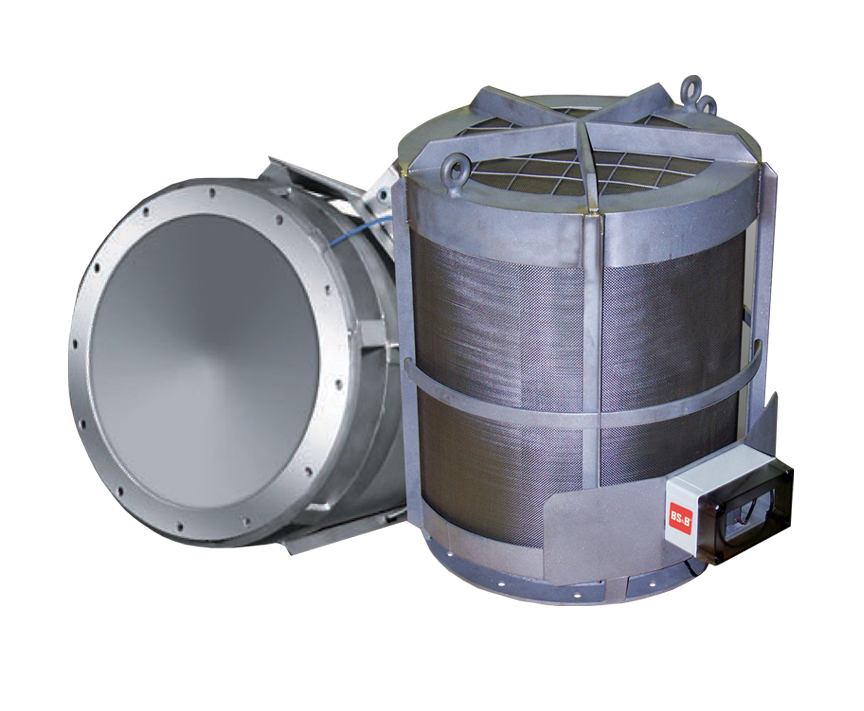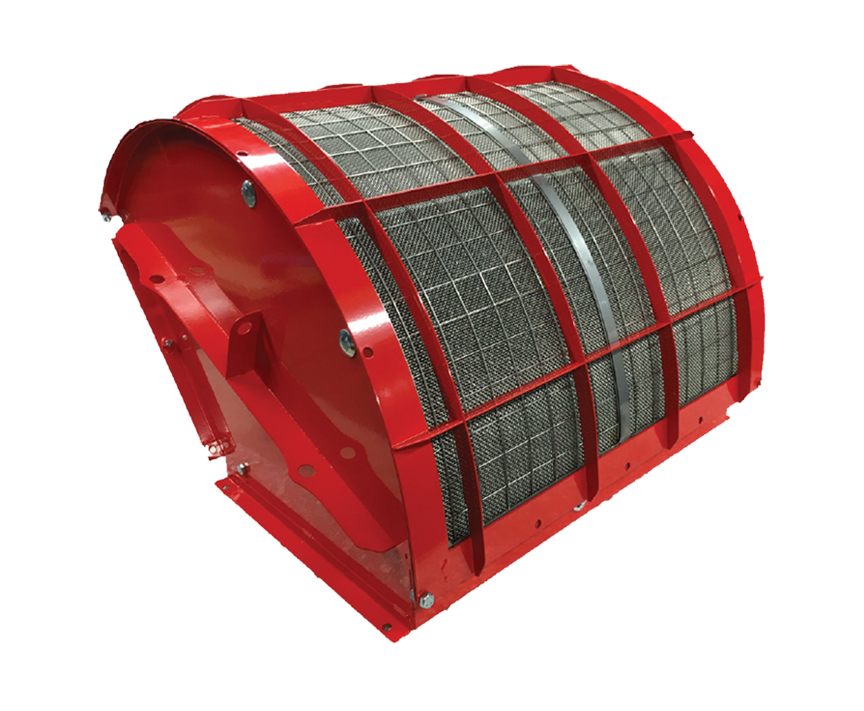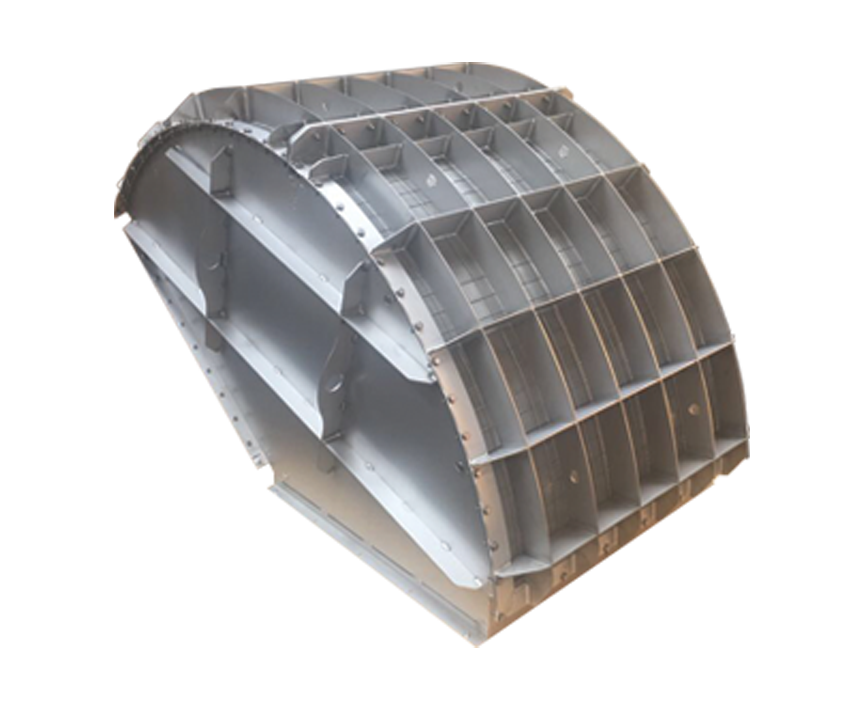FlameFree™ Venting
FlameFree™ ベント
性能
- 火炎防止 –作業員に安全な作業環境を提供します。保護された機器の外部での二次発火とそれに続く爆発の可能性を排除します
- 粉じん保持 – プロセス製品を保持し、潜在的に有毒な製品が環境に入る可能性を排除します
- 圧力保持 – 爆発圧力のピークを吸収し、圧力爆発から作業員と周辺環境を保護します
- 温度制御 – 周辺環境の温度上昇を最小限に抑えながら、火球を吸収します
お問い合わせはこちらから
Description
The quenching module retains the flame and hot gases of a deflagration as well as the burning and unburned dust passing through the open explosion vent. The 3-dimensional mesh arrangement acts as a heat sink that interrupts the explosion in mid-stream as well as an absorption of the pressure wave and dust that would normally be ejected by a vented explosion.
While the flameball temperature of a dust explosion can easily reach 500°C/ 932°F, the IQR quenching module typically remains below 100°C/212°F followed by rapid cool down due to its large surface area. This results in a negligible change in temperature in the environment surrounding the IQR System.
With the quenching of flame, retention of dust, and control of pressure and temperature provided by the IQR system, this safety device may be applied indoors whenever the impact of a vented explosion must be avoided.

Applications
Application of the IQR System™ The IQR System is recognized as an explosion venting device by Codes and Standards such as NFPA 68, NFPA 654 and the European Atex Directive. The IQR System is a solution for the protection of process equipment installed indoors where one or more of the following conditions exist:- Venting to outside requires ducting that is too long. Vent ducting that exceeds 20ft/6m in length is not recommended — ducts up to 10ft/3m in length have the least impact on the pressure developed within the protected process equipment.
- No space to install venting is available. This can arise where equipment is installed closely packed leaving no room for short and straight ducting.
- No access is available to outside for vent ducting. This can arise where equipment is installed in basement areas as where no outside wall is present.
- Release of fireball outside is unacceptable; a fireball might be ejected up to 100ft/ 30 meters and have 10 times the volume of the process equipment being protected.
- Release of dust (burned and unburned) outside is unacceptable.
- Release of explosion pressure pulse is unacceptable; adjacent building structures can be damaged by a pressure pulse that can exceed 2 or 3 psi over a large area for a short time.
Specification
The IQR System™ is an explosion venting device. The following information is required to select and specify the correct IQR unit for your application.- Process Dust (Kst and Pmax)
- Process Equipment Description (Volume(s)); preferably drawings including inlet and outlet connections.
- Normal operating pressure and temperature
- Protection pressure for process equipment (Pred)
Installation
The IQR System is simply installed by a bolted flange connection at its inlet, just as an explosion vent would by applied. Installation may be in any convenient location.
In the case of larger size IQR devices or where installed to weak equipment, additional bracing may be required by connecting to the eyebolts supplied with each IQR unit. The IQR system is always supplied with an integral Burst Alert® sensor and monitor circuit that will generate an alarm signal when the device activates. Codes require that this alarm signal be used to shut down the process to stop the feed of dust and air which are the fuel for an explosion.
Maintenance
Annual inspection of the IQR system is recommended by factory trained personnel. While the IQR is a passive safety device, just like an explosion vent, periodic inspection ensures optimum safety.
Factory trained personnel are available for assistance with commissioning as well as annual inspection. Forthcoming changes to codes and standards require that both passive and active safety systems be subject to periodic inspection. The IQR system has no routine maintenance requirements. Commissioning and annual inspections will identify any planned maintenance requirements unique to each application.
After system activation there is minimal external cleanup compared to an open vented dust explosion. The IQR System can typically be refurbished after activation for quick and economic process restart.
Description
The quenching module retains the flame and hot gases of a deflagration as well as the burning and unburned dust passing through the open explosion vent. The 3-dimensional mesh arrangement acts as a heat sink that interrupts the explosion in mid-stream as well as an absorption of the pressure wave and dust that would normally be ejected by a vented explosion.
While the flameball temperature of a dust explosion can easily reach 500°C/ 932°F, the IQR quenching module typically remains below 100°C/212°F followed by rapid cool down due to its large surface area. This results in a negligible change in temperature in the environment surrounding the IQR System.
With the quenching of flame, retention of dust, and control of pressure and temperature provided by the IQR system, this safety device may be applied indoors whenever the impact of a vented explosion must be avoided.

Applications
Application of the IQR System™ The IQR System is recognized as an explosion venting device by Codes and Standards such as NFPA 68, NFPA 654 and the European Atex Directive. The IQR System is a solution for the protection of process equipment installed indoors where one or more of the following conditions exist:- Venting to outside requires ducting that is too long. Vent ducting that exceeds 20ft/6m in length is not recommended — ducts up to 10ft/3m in length have the least impact on the pressure developed within the protected process equipment.
- No space to install venting is available. This can arise where equipment is installed closely packed leaving no room for short and straight ducting.
- No access is available to outside for vent ducting. This can arise where equipment is installed in basement areas as where no outside wall is present.
- Release of fireball outside is unacceptable; a fireball might be ejected up to 100ft/ 30 meters and have 10 times the volume of the process equipment being protected.
- Release of dust (burned and unburned) outside is unacceptable.
- Release of explosion pressure pulse is unacceptable; adjacent building structures can be damaged by a pressure pulse that can exceed 2 or 3 psi over a large area for a short time.
Specification
The IQR System™ is an explosion venting device. The following information is required to select and specify the correct IQR unit for your application.- Process Dust (Kst and Pmax)
- Process Equipment Description (Volume(s)); preferably drawings including inlet and outlet connections.
- Normal operating pressure and temperature
- Protection pressure for process equipment (Pred)
Installation
The IQR System is simply installed by a bolted flange connection at its inlet, just as an explosion vent would by applied. Installation may be in any convenient location.
In the case of larger size IQR devices or where installed to weak equipment, additional bracing may be required by connecting to the eyebolts supplied with each IQR unit. The IQR system is always supplied with an integral Burst Alert® sensor and monitor circuit that will generate an alarm signal when the device activates. Codes require that this alarm signal be used to shut down the process to stop the feed of dust and air which are the fuel for an explosion.
Maintenance
Annual inspection of the IQR system is recommended by factory trained personnel. While the IQR is a passive safety device, just like an explosion vent, periodic inspection ensures optimum safety.
Factory trained personnel are available for assistance with commissioning as well as annual inspection. Forthcoming changes to codes and standards require that both passive and active safety systems be subject to periodic inspection. The IQR system has no routine maintenance requirements. Commissioning and annual inspections will identify any planned maintenance requirements unique to each application.
After system activation there is minimal external cleanup compared to an open vented dust explosion. The IQR System can typically be refurbished after activation for quick and economic process restart.









